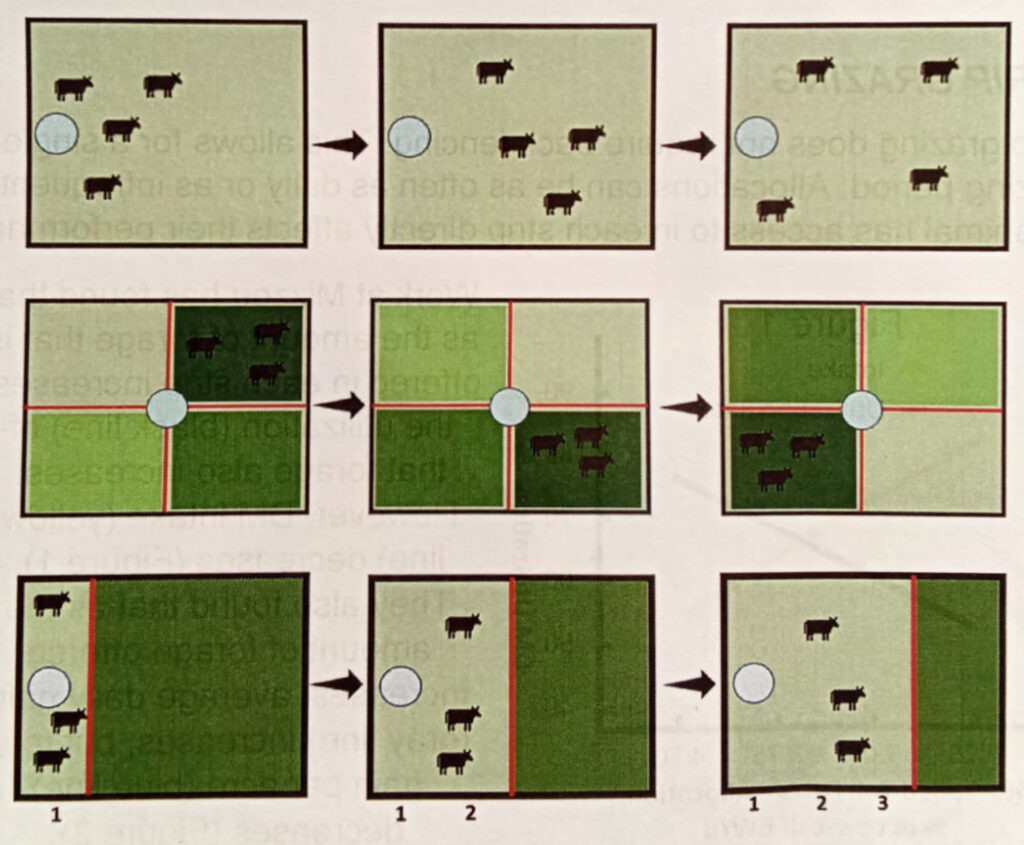by Sarah Gray/Managing Editor
Optimizing Pasture Management for Livestock
Pastures are thriving this season, according to MU Extension Livestock Specialist Shelby Jenkins. However, effective management remains a crucial focus for livestock producers in Central Missouri, especially after the region received significant rainfall. Understanding how to best utilize and maintain pastures can lead to healthier livestock and improved overall farm productivity.
Importance of Grazing Management
Grazing management is vital for sustaining both pasture health and livestock wellbeing. The right grazing techniques help maximize forage growth while minimizing land degradation. Among the popular methods are Continuous Grazing, Rotational Grazing, and Strip Grazing, each with unique benefits and challenges.
Types of Grazing Management
Continuous Grazing allows livestock to graze in a designated area without rotation. While this approach is straightforward, it can lead to overgrazing and underutilization of certain forage types. In contrast, Rotational Grazing involves moving livestock between different pastures, facilitating better recovery for grasses and enhancing soil health through diversified grazing patterns. Lastly, Strip Grazing focuses on confining livestock to a narrow strip of pasture, maximizing forage consumption while minimizing waste.
Benefits of Grazing Perennial Forages
The Extension emphasizes that grazing perennial forages can be one of the most cost-effective feeding strategies for livestock. Perennial grasses, once established, require less maintenance and provide continuous grazing opportunities. This method not only promotes the sustainability of the pasture but also reduces the need for supplemental feed, lowering overall production costs.
Challenges in Pasture Management
Despite the benefits, managing pastures effectively presents challenges. Weather variability, soil conditions, and livestock health are all critical factors influencing pasture productivity. Farmers must adapt to changing conditions and continuously assess their management strategies to ensure optimal forage availability and quality.
Best Practices for Pasture Management
Implementing good pasture management practices is essential for long-term success. This includes regular soil testing, monitoring forage quality, and keeping accurate records of grazing patterns. Additionally, integrating cover crops and maintaining proper fencing can enhance pasture resilience and productivity.
Conclusion: A Sustainable Approach to Pasture Management
In summary, effective pasture management is a vital component in ensuring healthy livestock and sustainable farming practices. By understanding and applying various grazing methods, farmers can optimize their operations and contribute positively to the agricultural ecosystem. It’s essential to stay informed and flexible in management strategies to meet the ongoing challenges faced by livestock producers.

Effective Grazing Management for Sustainable Livestock Farming
By Sarah Gray, Managing Editor
The Importance of Pasture Management
Pasture management is a crucial aspect of livestock farming. Well-maintained pastures not only provide essential nutrients for animals but also enhance the overall health of the farm ecosystem. Effective management ensures that livestock have access to high-quality forage while promoting sustainable land use.
Types of Grazing Management
Various grazing management systems cater to different farming needs. Understanding these systems allows farmers to choose methods that best suit their landscape and livestock types. Here are three common approaches:
- Continuous Grazing: Animals graze a designated area without periodic rest. This method is simple but can lead to overgrazing in some cases.
- Rotational Grazing: Livestock are moved between different pastures, allowing for regrowth of forage and reduced land degradation.
- Strip Grazing: This system involves restricting animals to a narrow strip of pasture, maximizing forage utilization and minimizing waste.
Benefits of Grazing Perennial Forages
Grazing perennial forages is often highlighted as a cost-effective strategy. Not only do these plants provide a resilient source of nutrition due to their deep root systems, but they are also beneficial in improving soil health and reducing erosion.
Environmental Considerations
Modern grazing practices must consider environmental impacts. Sustainable grazing habits can help preserve natural ecosystems and enhance biodiversity. Farmers who implement adaptive management strategies can reduce land degradation and promote a healthy environment for future generations.
Monitoring and Adjusting Practices
Constant monitoring is essential for effective grazing management. Farmers should regularly assess pasture conditions to adjust grazing patterns as needed. By keeping track of indicators such as forage growth and soil health, livestock producers can ensure that they are making the most of their resources.
Conclusion
In summary, effective grazing management is key to successful livestock farming. By understanding different grazing systems and the benefits of perennial forages, farmers can make informed decisions that enhance both productivity and sustainability. With continued education and adaptation to changing conditions, farmers can ensure a prosperous future for their livestock and land.


